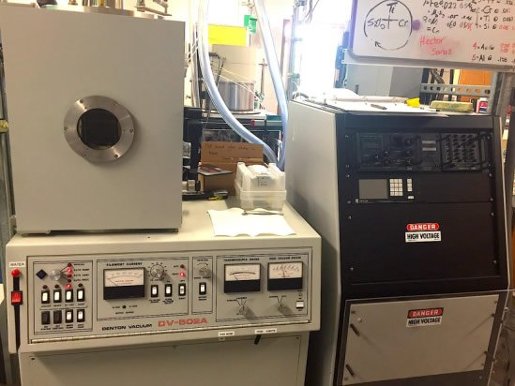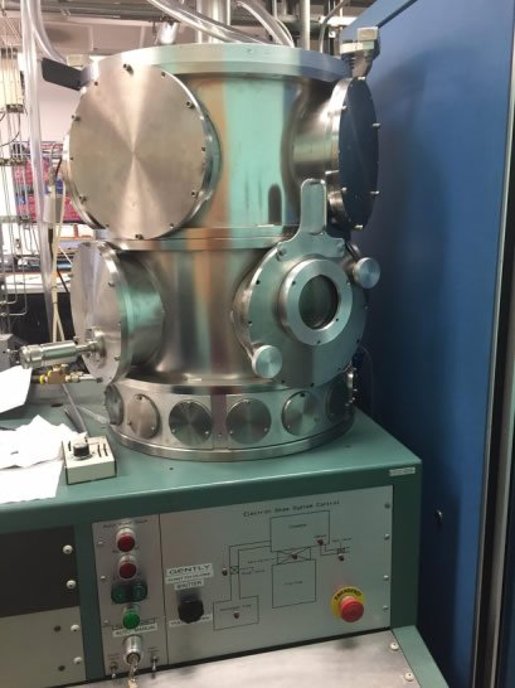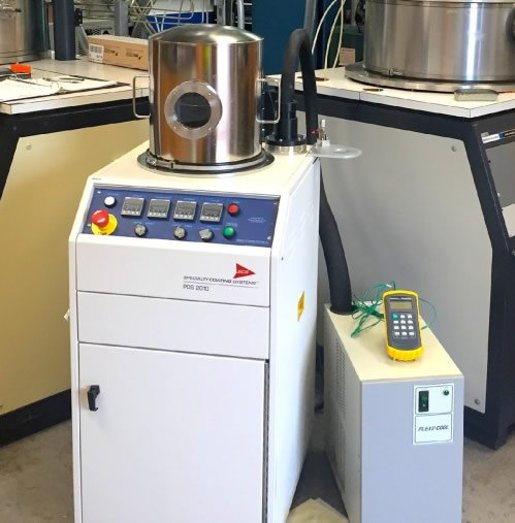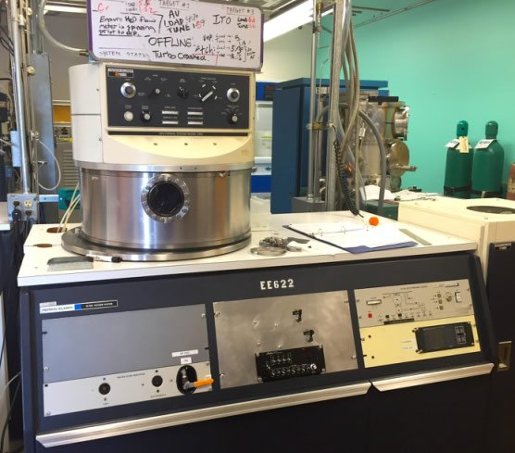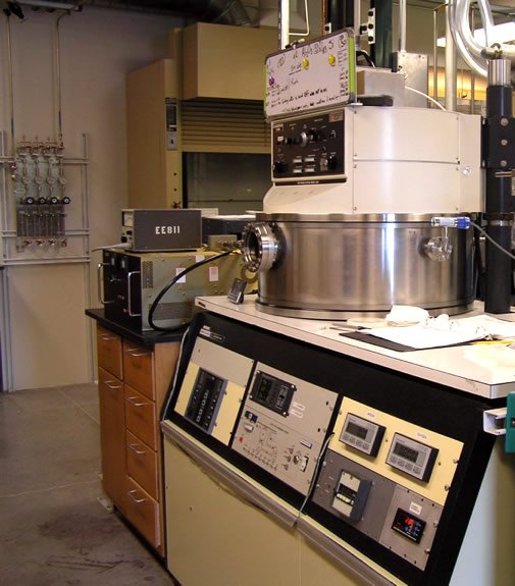Minerals and Materials Engineering Building (M&M) 432
Thin film deposition laboratory houses the capabilities for the deposition of metals and dielectrics. It currently has two radio frequency (RF) sputtering systems, two electron beam deposition systems, parylene coater, and the capabilities for electrodeposition. This room also has the following resources:
- Safety glasses
- Gloves
- Cleanroom wipes
- Dry nitrogen gun
- Deionized water tap
Electron Beam Deposition
Electron beam deposition occurs at high vacuum (10-7 Torr). A focused beam of high-energy electrons is directed to a crucible containing the ultra-high purity source material (such as gold). The beam will eject source atoms towards the substrate which then deposit as a thin film. The high vacuum ensures near line-of-sight deposition leading to minimal sidewall coverage, which is ideal for samples requiring lift off.
Denton DV-502A
The Denton Vacuum DV-502A electron beam deposition tool has:
Support Features
- Water-cooled crucible holder that can hold four 7cc crucible liners
- Six-inch rotatable substrate holder
- Quartz crystal thickness monitor
- Current source materials: Co, Ni, Fe, Pt, Ti, SiO2, Cr, Au, Al, Si, and Cu
KH Frederick EB12
The Frederick electron beam deposition tool has:
Support Features
- Water-cooled crucible holder than can hold four 20 cc crucible liners
- Non-rotating six-inch substrate holder
- Quartz crystal thickness monitor
- Source materials: Ag, Al, Si, Sn, Ta, Mo, Ge, Cu, Ti, In, and Cr
SCS Parylene Labcoter 2
The SCS Labcoter® 2 vacuum deposition tool is specifically designed for Parylene conformal coatings. Parylene-C is vaporized under vacuum and then drawn into the deposition chamber to deposit a layer of parylene. Parylene coatings are inert and biocompatible. They have excellent moisture, chemical, and dielectric barrier properties.
Note: Samples often require surface treating in a silane solution to ensure good adhesion, before loading into the high vacuum chamber.
Support Feature
- Parylene-C precursor
Sputter Deposition
Sputtering is a momentum transfer process in which atoms from a target are driven off, or sputtered, by bombarding ions. Sputtered atoms travel until they strike a substrate, where they deposit to form the desired layer. As individual atoms, they are chemically active and readily form compounds with the ions and atoms of the bombarding gas. For this reason inert argon is used as the bombarding gas. In some applications, however, a reactive gas is purposely added to argon so that the deposited film is a chemical compound, and not the elemental target materials. Sputter deposition normally occurs at a pressure of 10-3 Torr; therefore, the coating is more conformal compared to electron beam deposition.
Perkin-Elmer 2400 Sputter Tool - 6 inch
The Perkin-Elmer 2400 sputtering system has:
Support Features
- 13.56 MHz radio frequency power supply
- Three 4-inch target holders
- Two mass flow controlled lines for argon and oxygen
- Targets: Ti, SiO2, ITO, Cr, Au, Mo, Al, Si, MgO, ZnO, and Cu
Perkin-Elmer 2400 Sputter Tool - 8 inch
The Perkin-Elmer 2400 sputtering system has:
Support Features
- 13.56 MHz radio frequency power supply
- Three 8-inch target holders
- Three mass flow controlled lines for argon, oxygen, and nitrogen
- Targets: Co, SiO2, SiC, CoTi, AlYt, HfO2, C, Y2O3, W, Co-Zr, Ge, Ti, MoSi2, Al(98%)-Nb(2%), Si-Al, NiFe(19), AlZnO, Cu, Zn, NiFe(17), Ta2O3, Cr, LiO, Mo, Mo-(MoSi2)5.3, FeCo, B3F, Al, Si, Si-(SiN)5, Cu, Ni, and Al2O3
